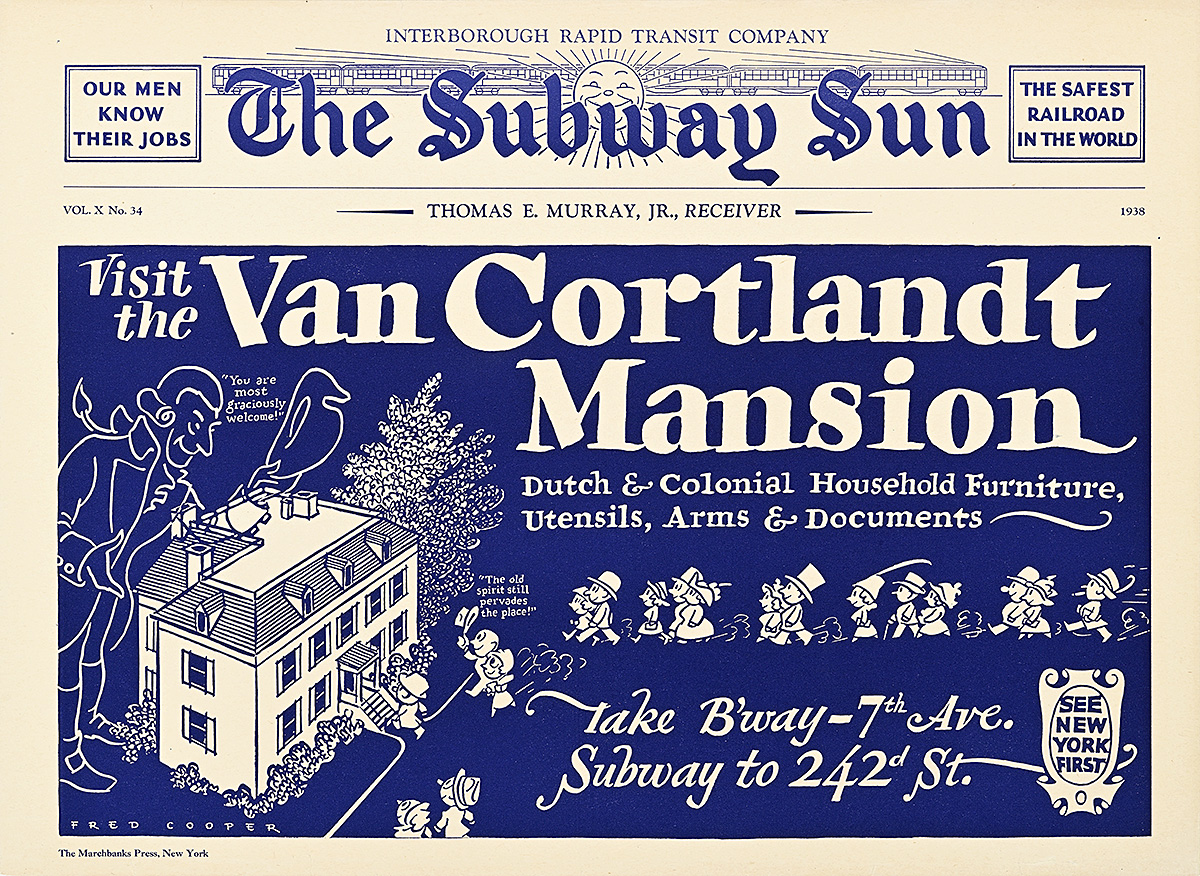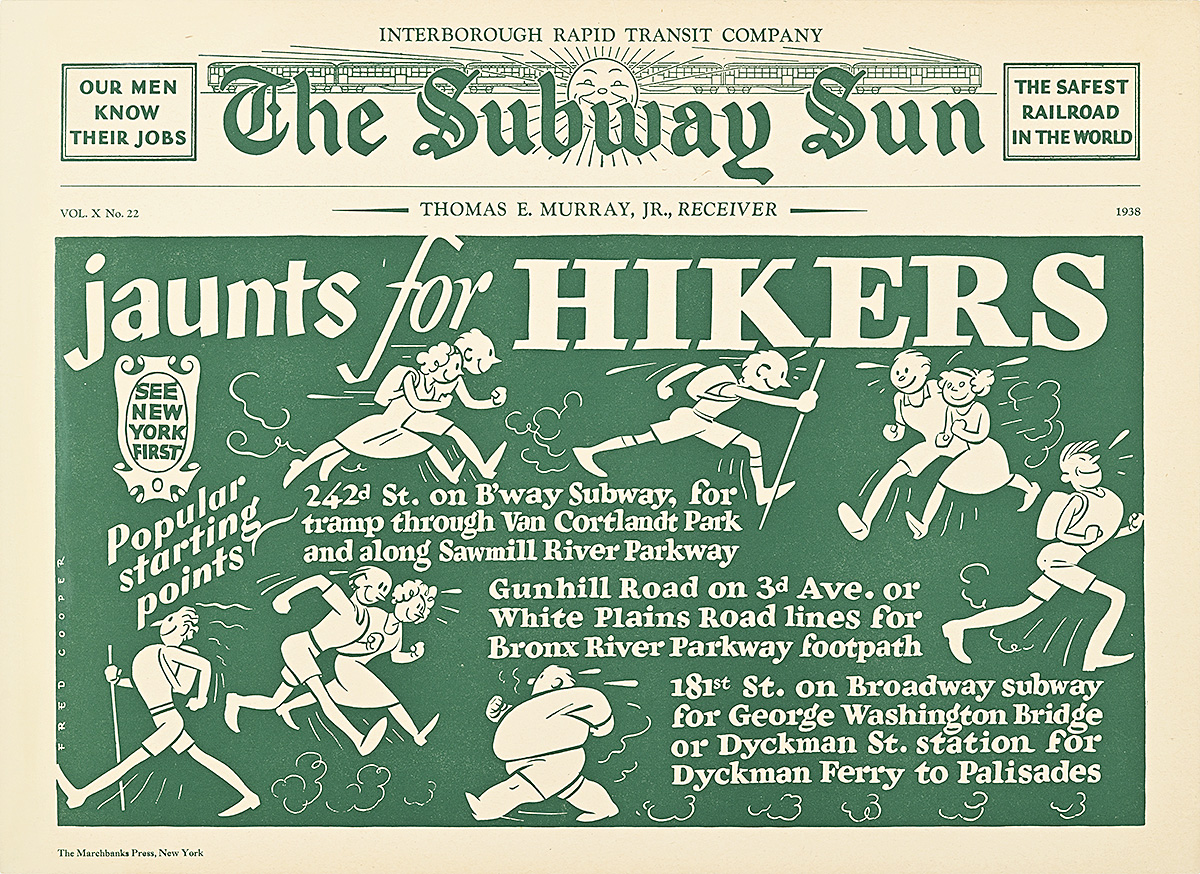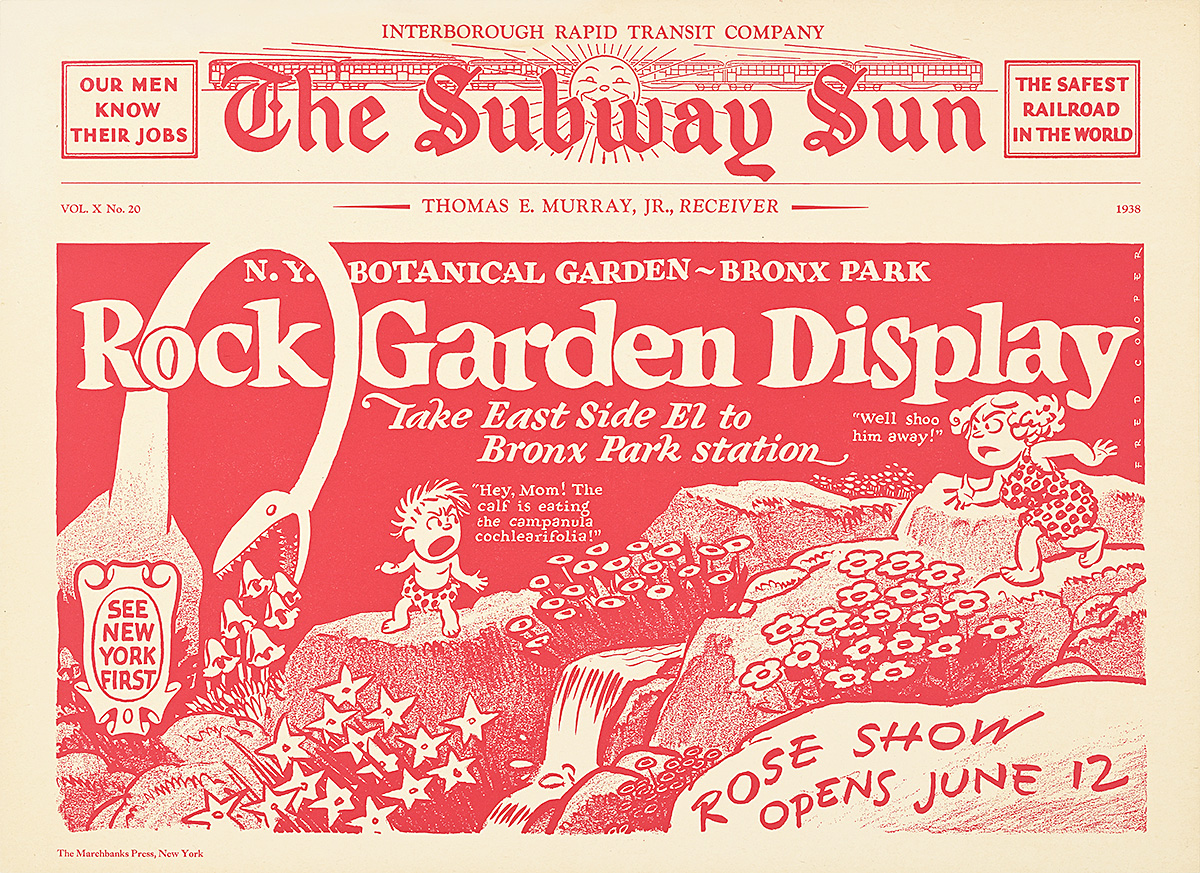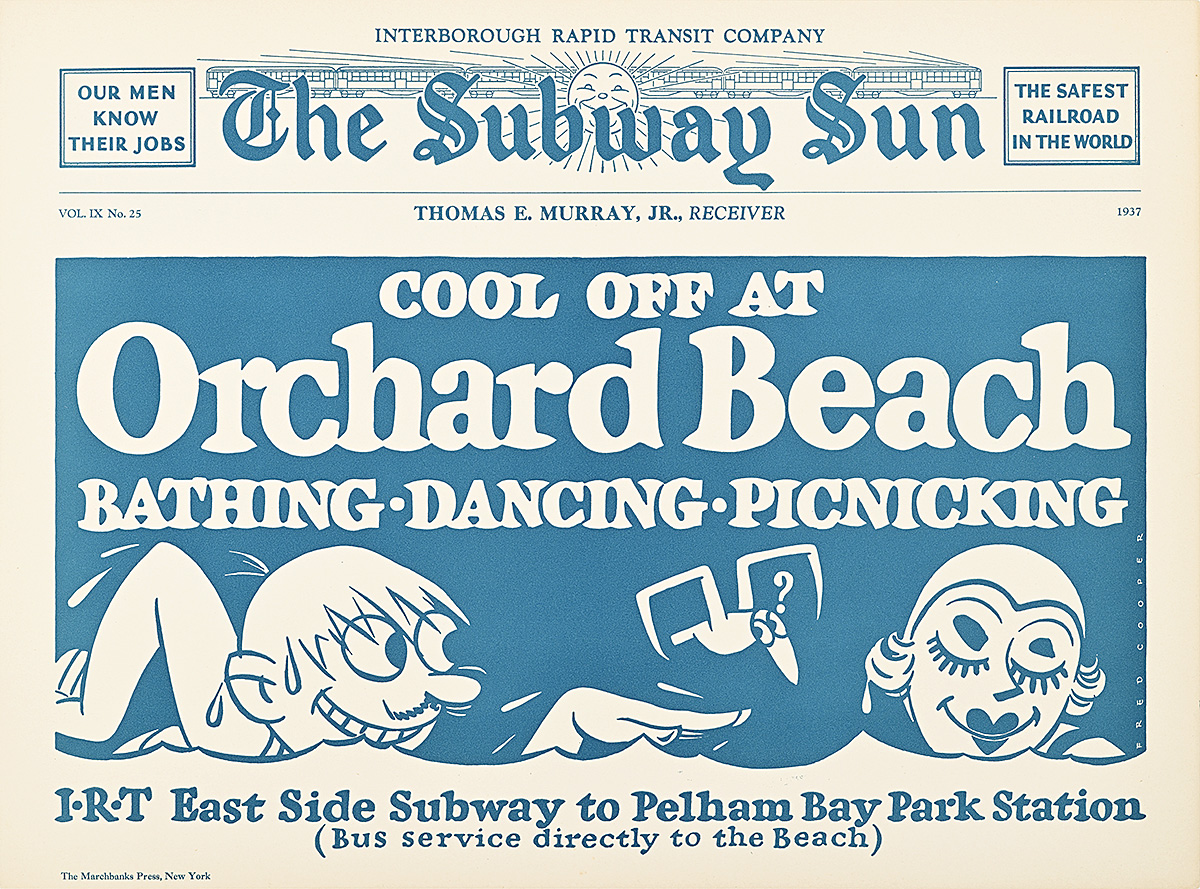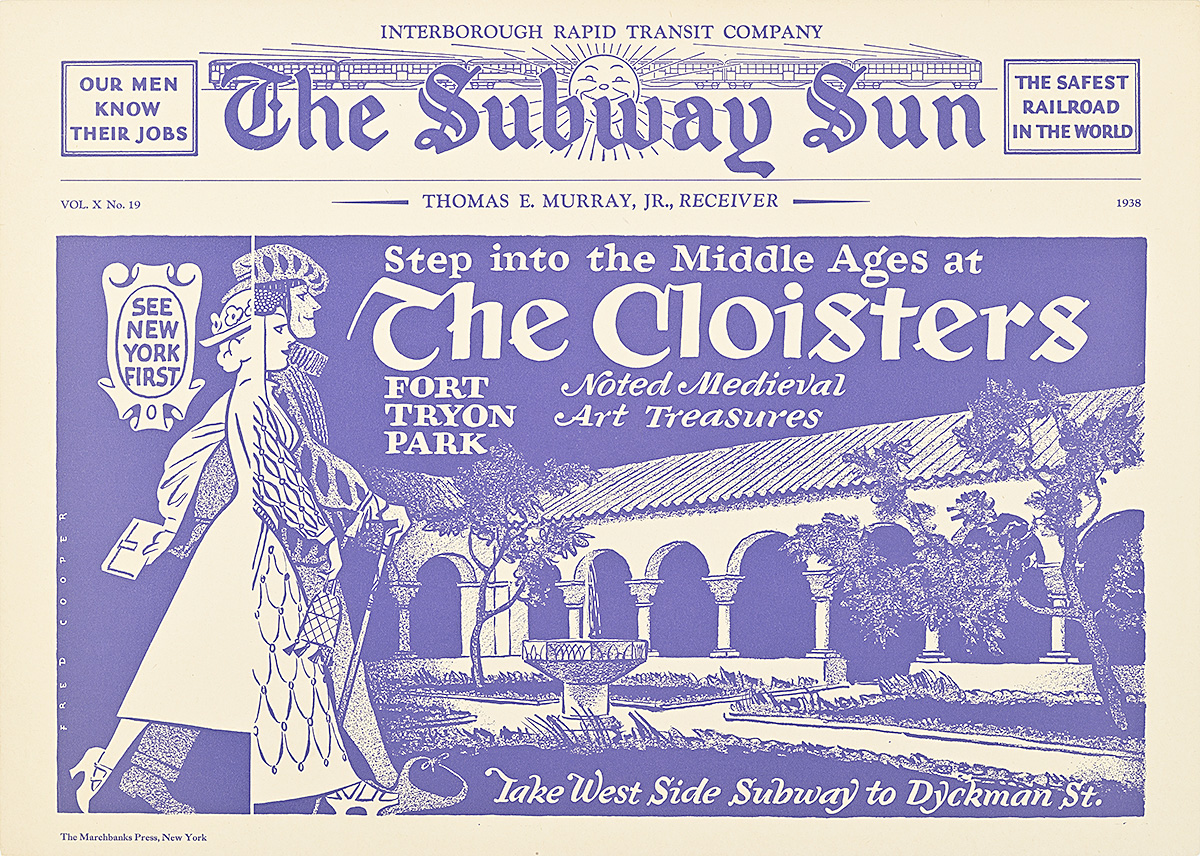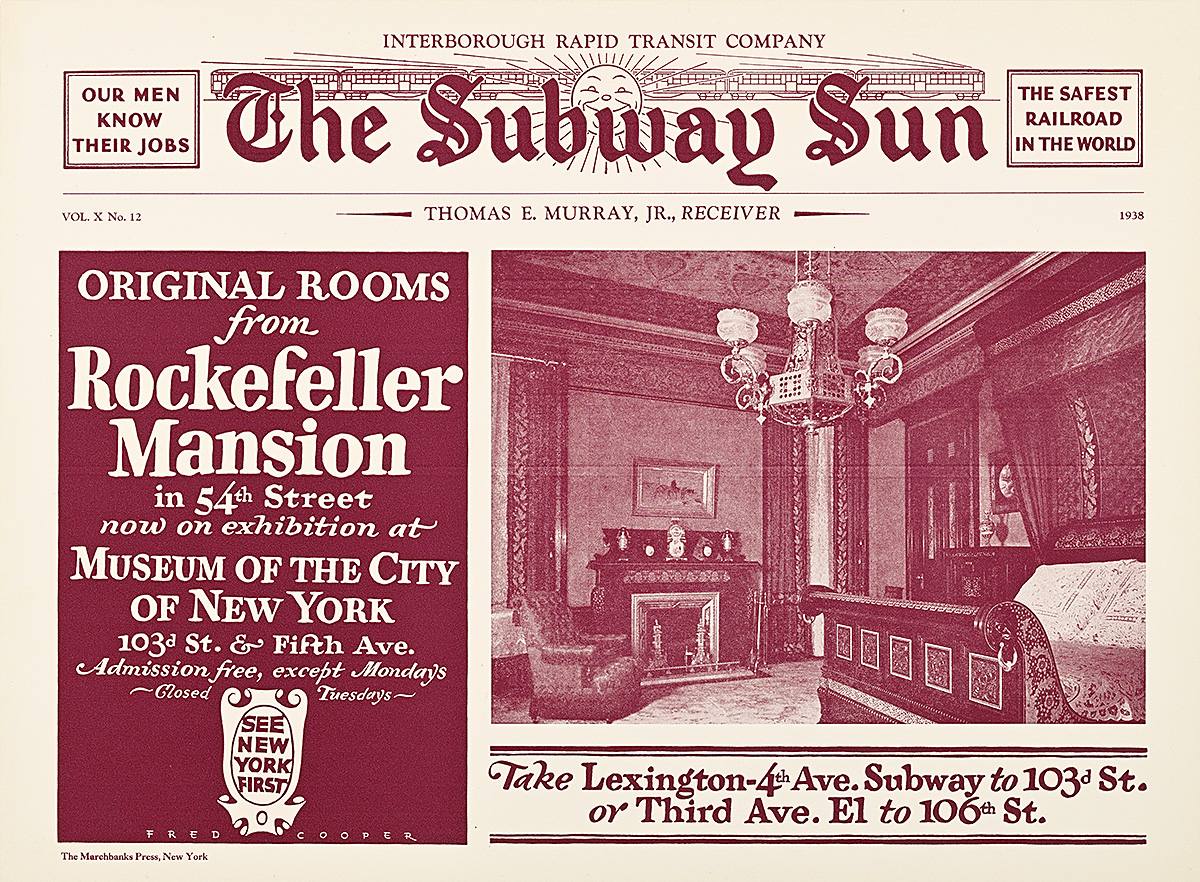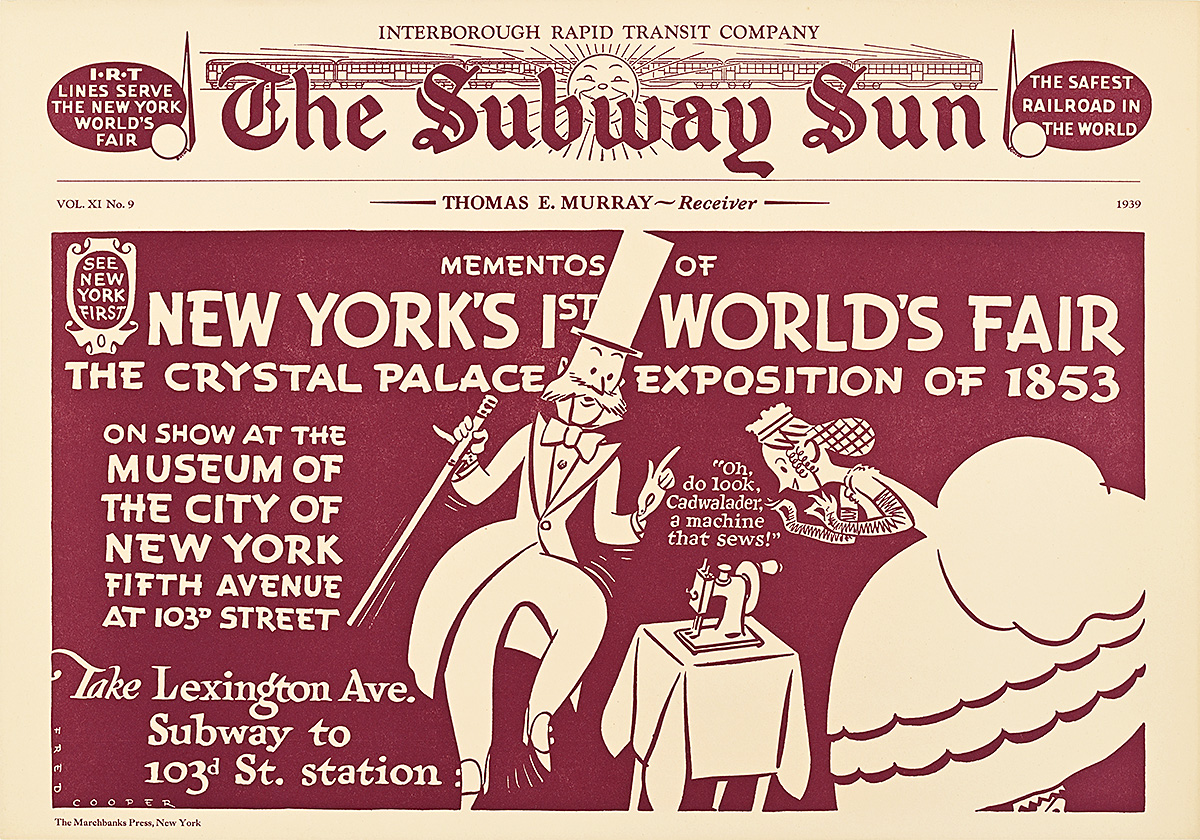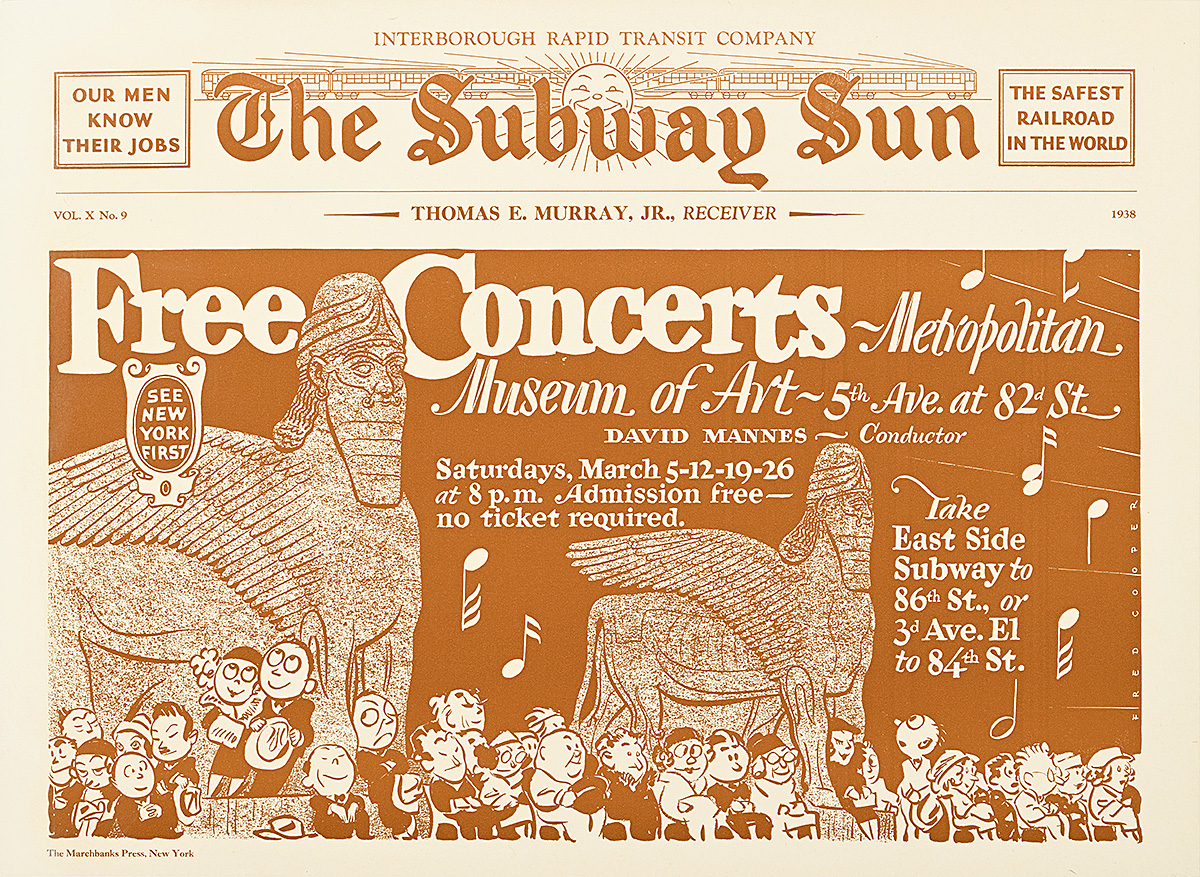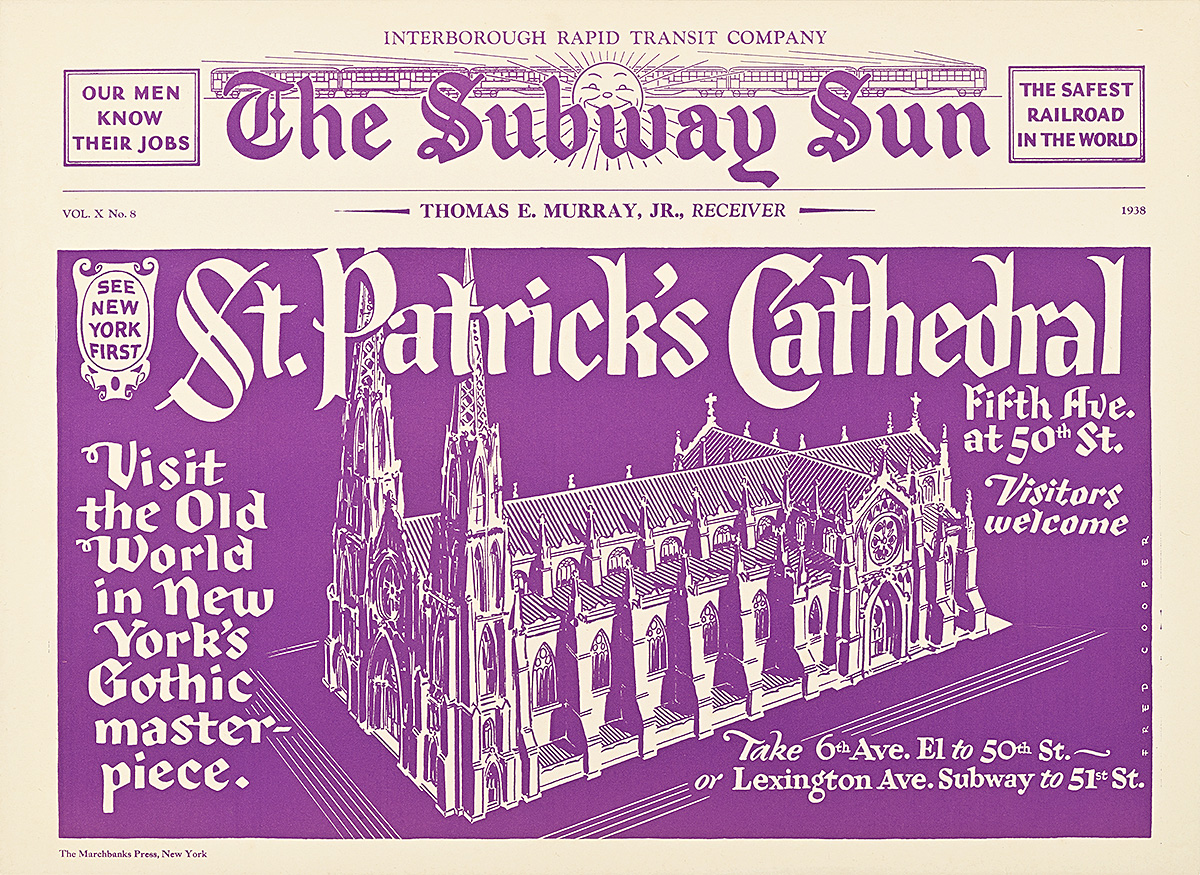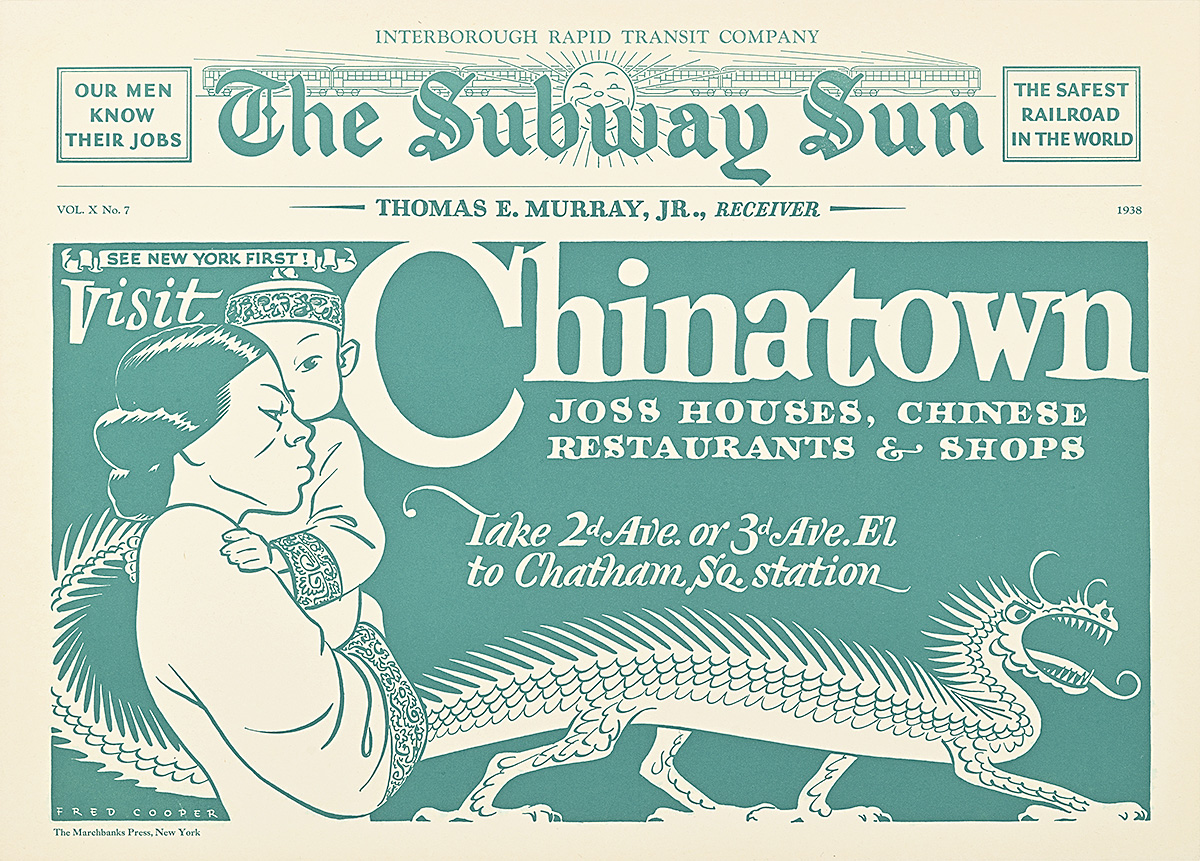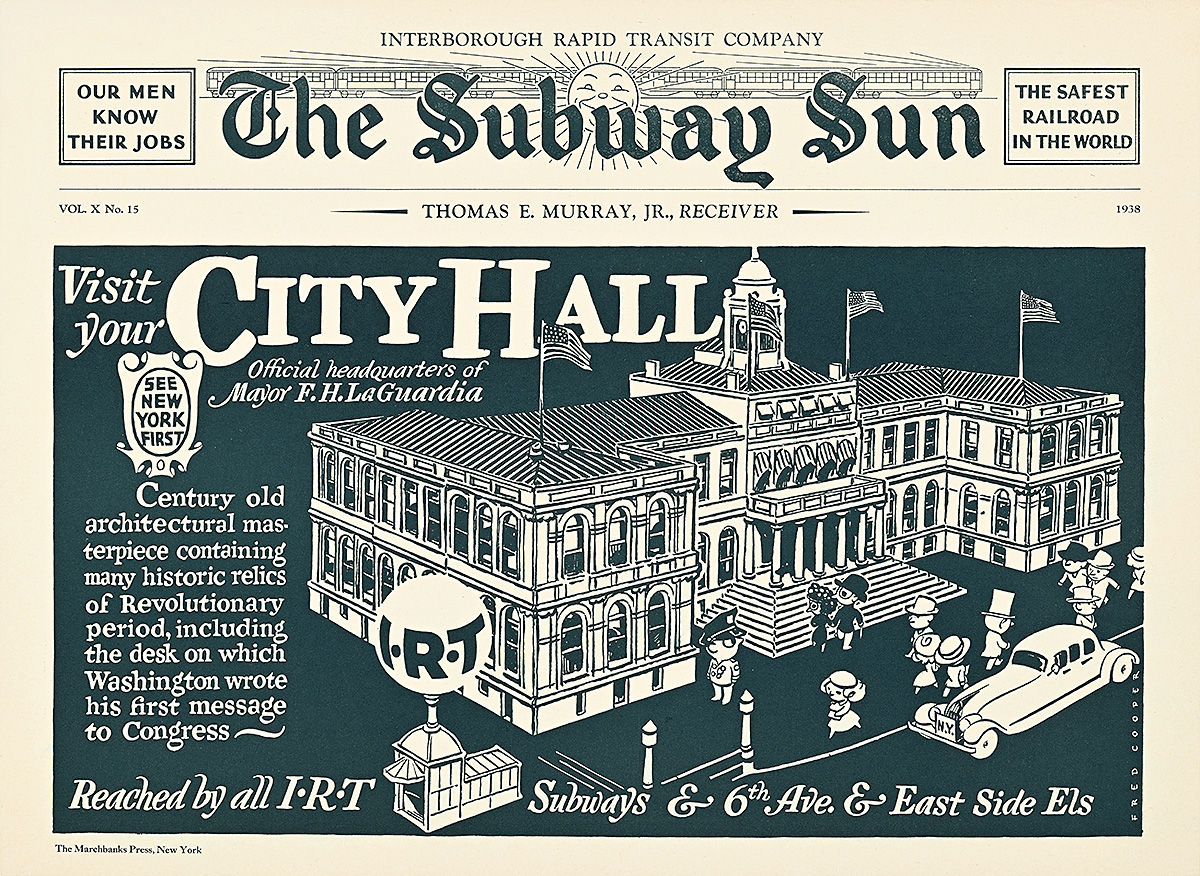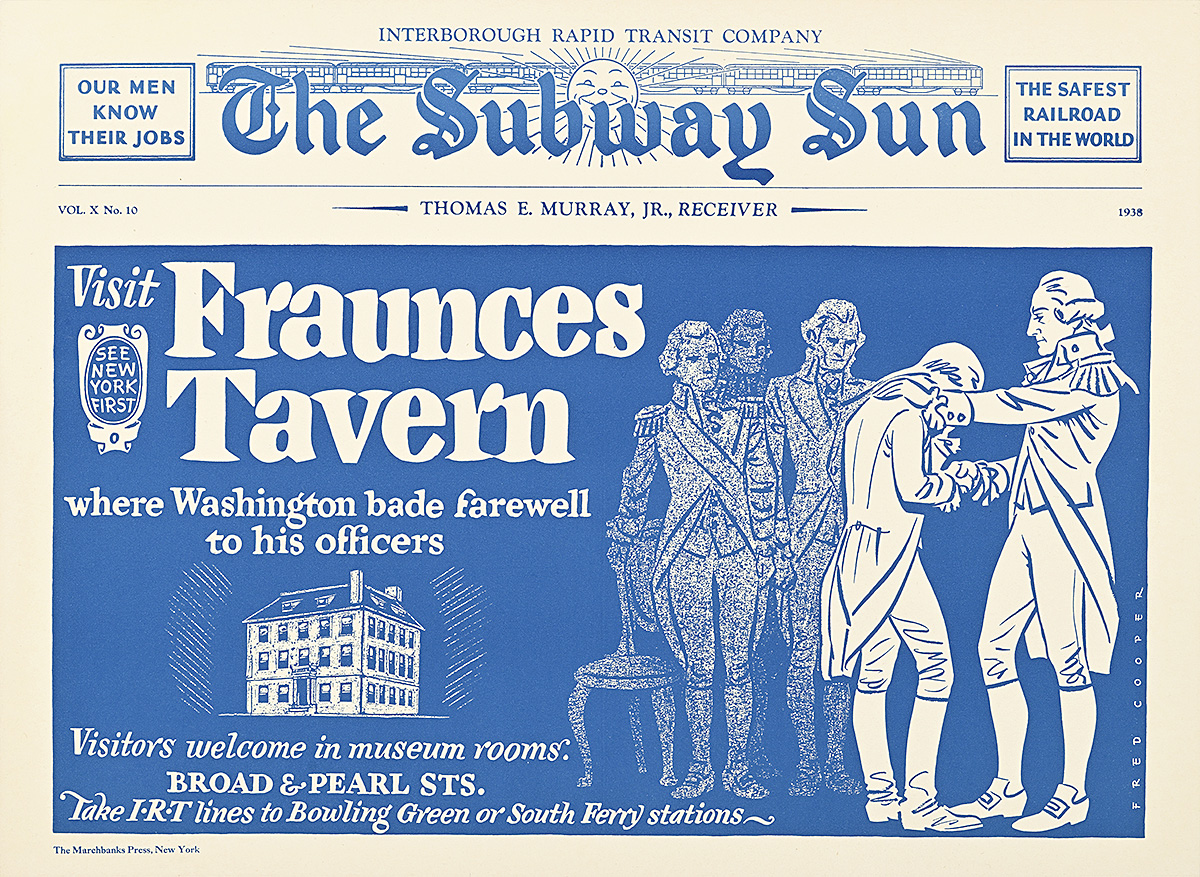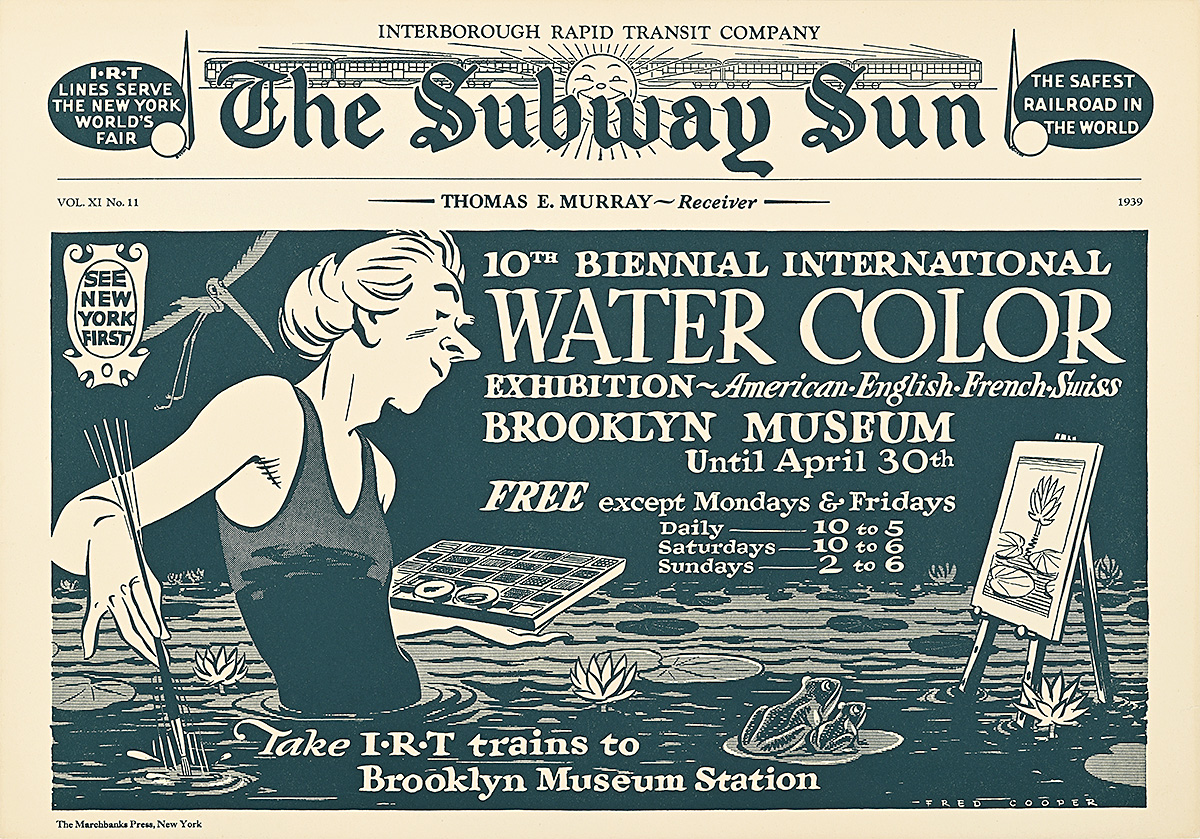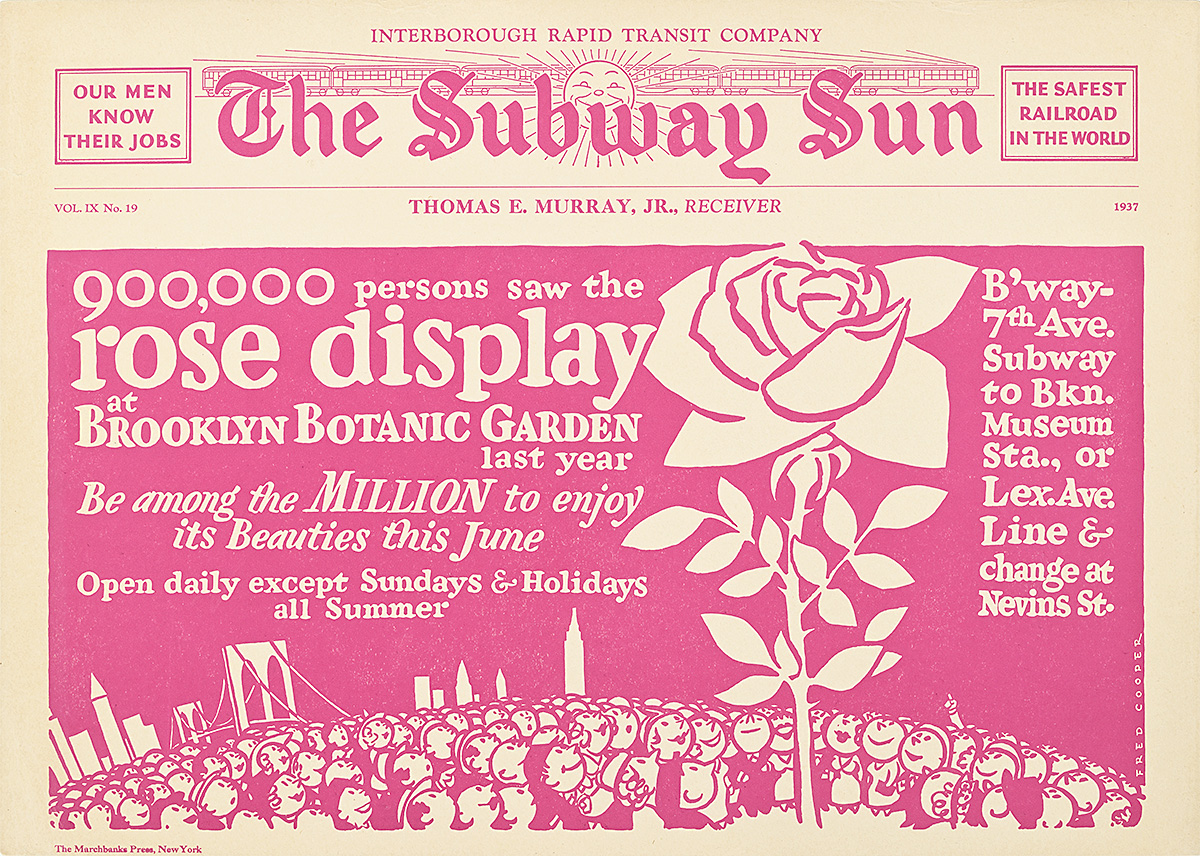From the Bronx to the Battery: The Subway Sun
The Interborough Rapid Transit Company (IRT) opened New York City’s original underground subway line in October 1904. While the city was one of the most diverse in the country, before the introduction of the subway, most New Yorkers were not in regular contact with people outside their own neighborhoods. Initially extending from the Bronx to Lower Manhattan (with service to Brooklyn beginning in 1908) and forming part of the wider transit system, the convenient and affordable IRT encouraged riders to travel beyond their communities for both work and leisure. In order to entice people to regularly use the subway, the IRT printed two in-car poster campaigns, The Elevated Express and The Subway Sun, that highlighted each borough’s unique attractions. Of these, The Subway Sun was especially successful.
The Subway Sun first appeared in 1918 as a series of weekly advertisements promoting the IRT. In the early years, the advertisements were text heavy, read much like a newspaper, and featured minimal illustrations. They typically emphasized codes of conduct, service announcements, and operating costs. Within a few years, the posters also began to advertise notable locations throughout the Bronx, Manhattan, Brooklyn, Queens, and Staten Island that New Yorkers and tourists might want to visit, thereby increasing use of the system. One of the campaign’s original slogans was “Ride on the ‘L’ and See New York.” This was eventually shortened to “See New York First” and often appeared in an emblem or banner alongside the central design.
The posters in this exhibition were designed between 1937 and 1939 by illustrator and type designer Fred Cooper, who created the unified look of The Subway Sun throughout the 1930s and 1940s. Already an established cartoonist, he brought his signature “cartoonettes” and special lettering to enticing images of the vast and multifaceted city. The typeface at the top of each advertisement mimics the Gothic style of the masthead of the popular New York daily newspaper, The Sun. The messages in the boxes on each side of the title, “Our Men Know Their Jobs” and “The Safest Railroad in the World” are intended to reassure riders who were hesitant to travel underground. Cooper noted that the cartoons were most effective when they were a solid mix of good humor and knowledge of the subject matter, and his mastery of both of these are evident in his designs for The Subway Sun.
All posters in this exhibition are part of the Poster House Permanent Collection.
Whenever feasible, Poster House reuses materials from previous shows to drive sustainable practice.
Large text and Spanish translation are available via the QR code and at the Info Desk.
Guías con letra grande y la traducción al español están disponibles en atención al público y a través del código QR.
